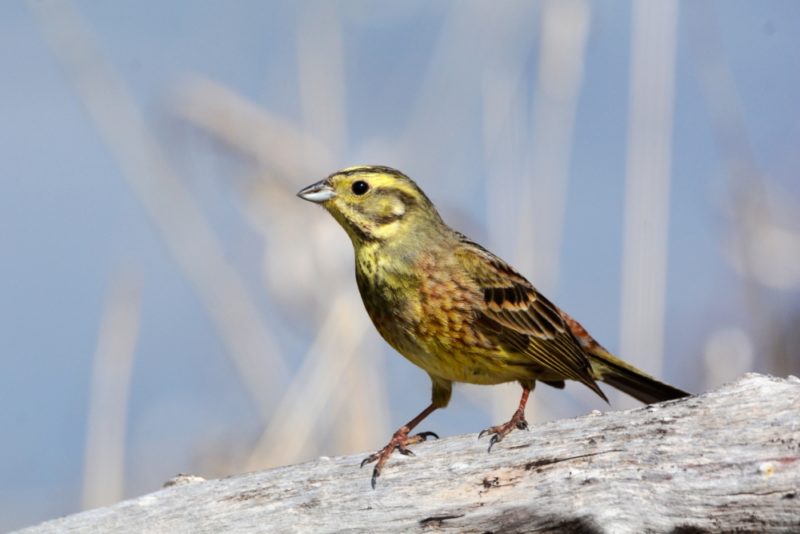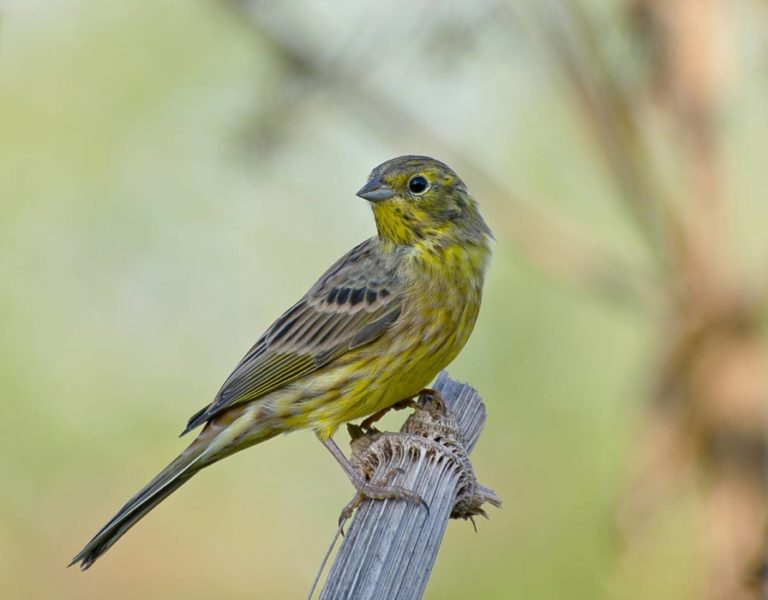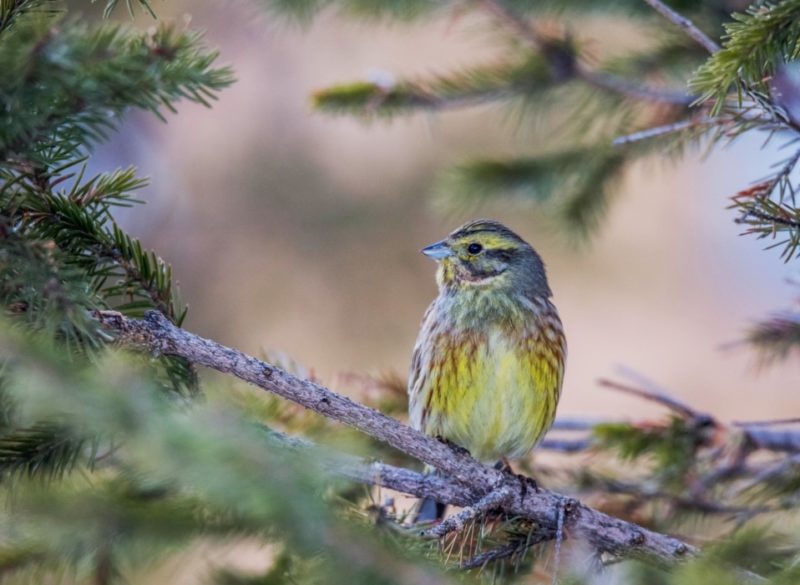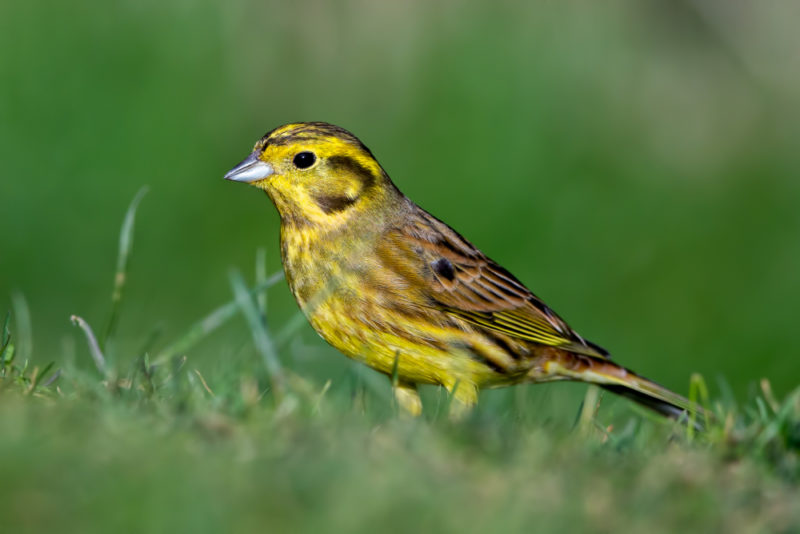The interesting names of these birds in different languages would be enough for half a dozen other species. In German-speaking countries, the bird is known as Goldammer ("golden"), Emberiza ("small"). The species epithet citrinella comes from the word citrus, which describes the lemon-yellow color of plumage, and the Russian name oatmeal is most often explained by the habit of peeling grains.
Material Content:
Appearance and features of the bird
The oatmeal family belongs to a large group of passerines. These are sedentary, migrating or migratory birds of small sizes. The genus Ovsyanka has more than two dozen species.
Emberiza citrinella is the scientific name for the bird. The species is widespread in Eurasia. It occurs from Ireland and the southern part of the Pyrenees in western Europe to Lake Baikal, the Iranian Plateau in Asia.
The male is easier to recognize by the golden yellow color of the plumage, the brightest during the mating season.
General bird species description:
- the size of a sparrow, but slimmer;
- beak conical, strong, gray in color;
- yellow plumage above the eyes, on the compilation, neck;
- on goiter, chest, and stomach, speckles of various lengths are grayish, greenish-brown;
- tail relatively long, dark, with notches;
- back with dark strokes on a grayish background;
- legs are yellow-brown, with tenacious toes.
The weight of a small bird is from 20 to 37 g, its body length is from 15 to 18 cm, its wings are from 8 to 10 cm, its beak is from 1 to 1.5 cm. The female is slightly larger and heavier. The color of the male’s head and throat during the mating season is brighter, attracting attention with golden and lemon-yellow tones. The forehead, cheeks are decorated with stripes, strokes of gray-olive color. The plumage of the female is more modest: dull yellow with olive shades, the wings are rusty brown.
The same bird does not look the same in spring and autumn.
In autumn, after molting, oatmeal lose yellow feathers. A darker plumage appears. "Golden" spots are stored on the goiter and abdomen of the male. The color of the grown offspring of both sexes is the same as that of females.
Habitat and lifestyle
The bird in the nesting period is found in open woodlands, on glades and edges of floodplain forests. In the steppe inhabits tree plantations along roads, forest belts, slopes of beams. The habitat of the species beyond the Urals is light birch groves with tall grass, mixed forests. In Altai, a bird nests in thickets of shrubs at an altitude of up to 1.8–2 thousand m.
Ordinary oatmeal is not afraid of people, in search of food they fly into gardens, vegetable gardens, city parks.
Birds spend a lot of time in bushes, hedges. From the end of August, 20-50 individuals are grouped together and are preparing for migration. During this period, finches and yurks join flocks.
Ordinary buntings migrate over short distances. Winter is spent in Central Europe, the Mediterranean countries. Wintering birds are found in Spain, Italy, the Balkans, Turkey, and northern Israel. Less commonly, oatmeal flies to Malta and Sicily, sometimes reaching the north of Morocco. In Europe, these are most often roaming and settled birds.
What does ordinary oatmeal eat
It is mainly a herbivorous bird. Almost the whole year it feeds on the seeds of various wild and cultivated plants. More diverse food is required for adult birds to breed, hatch eggs; young growth - for rapid growth.
Buntings choose places close to crops of buckwheat, millet. Fly to feed on the fields, gardens. A strong beak is well suited for extracting seeds from dry and juicy fruits, tearing young shoots of plants, mainly weeds.
In summer, common oatmeal is a “thunderstorm” of forest pests.
The bird eats caterpillars of the forest moth, elm tailtail, cobweb sawfly, and other insects. It catches hymenoptera, beetles, grasshoppers, finds larvae, worms, spiders, supplementing animal food with the “vegetarian diet”.
In autumn, birds feed on harvested fields and gardens. Birds near livestock farms, stables peck undigested grains from manure. Large flocks fly in search of the remaining seeds in the fields.
Propagation Features
In spring, males arrive in March – April in small groups or singly. The first concerts of buntings can be heard even before the snow melts. The male with his singing on the tops of the trees signals to the competitors that the territory is occupied. Soon a female flies in.
Ordinary buntings choose quiet secluded places for breeding.
Birds of this species nest in separate pairs. They prefer thickets of shrubs, dense tall grass. They build a nest on the ground, less often they are located at a height of about 20 cm. Skillful “builders” use depressions in the soil. They cover the bottom and walls of the fossa with dry blade of grass, leaves, roots, animal hair, horse hair.
From April to early August, 1 or 2 broods appear in a nesting pair of oatmeal. Females lay and hatch 3-5 eggs. During an incubation that lasts 14 days, males sometimes replace females in the nest for a short time. Both parents feed the chicks for 13 days. Young growth fully fledged at the age of 2 weeks and makes the first flights.
Life span
Common oatmeal can live 4 years. Ornithologists met birds aged 8–13 years. Oatmeal lifespan is reduced due to natural enemies. These are hawks, falcons, crows, weasels, martens, foxes. In settlements, cats hunt for birds. The worst enemy is a person who destroys the natural habitat of animals.
Bird singing
Males in the mating season attract females by singing. Most of the day they are filled with melodic trills, sitting on a bush, tubercle, sometimes just among the grass on the ground. Singing oatmeal in regions with warm winters has been heard since February.The bird begins to withdraw its trills about 45 minutes before sunrise.
In the male’s singing, short high tones “qi-i-ik” (intro) and the long, melodious passage “ti-di-di-di-ii” alternate quickly. Followed by a long “ti-u-u”, “qi-u-u”. In the "repertoire" of the little singer up to 300 different versions of tunes.
Buntings are sung even on hot summer days.
Little singers are caught in the spring and kept in captivity. A spacious cage is chosen for the bird, in the first days it is covered with a dense fabric. Sifted sand or pieces of paper are poured into the bottom.
In the afternoon, it is recommended to put the cage in a well-lit place. The bird needs water for drinking and swimming. In captivity they feed millet, rice, oatmeal, weed seeds, and flour worms. You can use ready-made feed mixtures for songbirds.
Interesting Facts
The male is easily recognizable by the golden color of the plumage, twitching of the tail and the metallic sound of “cyc”.
The species is listed in the Red Book of several European countries due to population decline as a result of land development.
Ordinary oatmeal was introduced in the 19th century from England to New Zealand, where the number of birds has been increasing since then (in Europe it has been declining).
A beautiful and bright bird is useful for forestry and agriculture - it eats seeds of weeds, insect pests.
Over the Urals, as a result of crossing two types of oatmeal - common and white-cap - hybrid populations arose.
The bird begins to sing in captivity only with good care, proper maintenance.
















